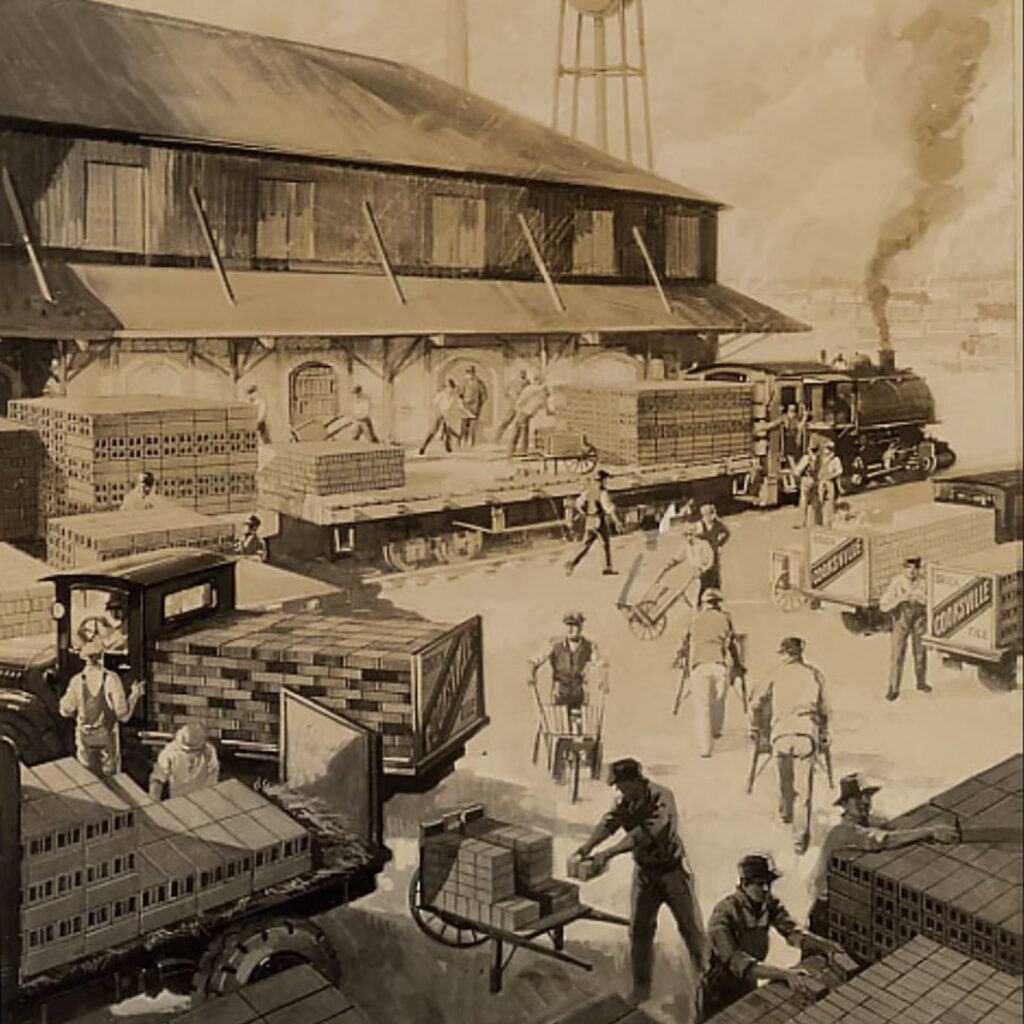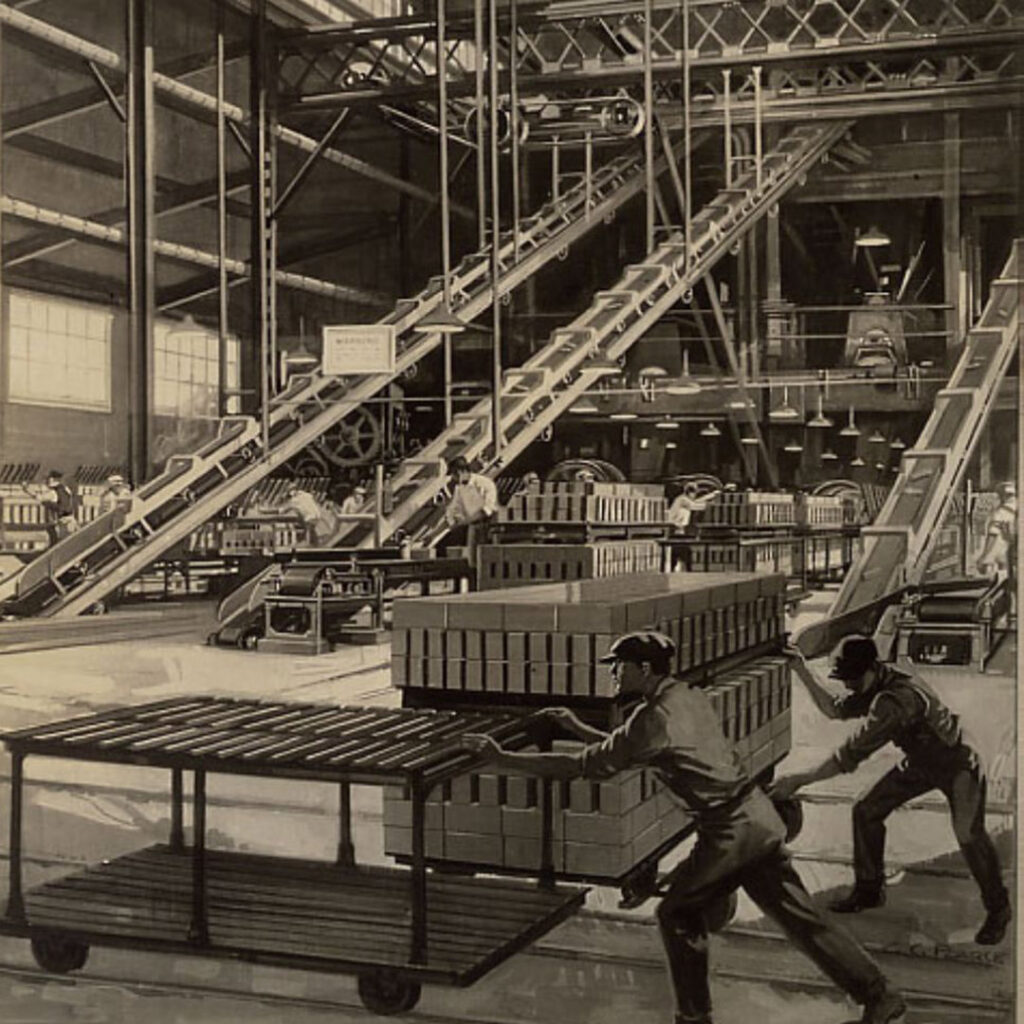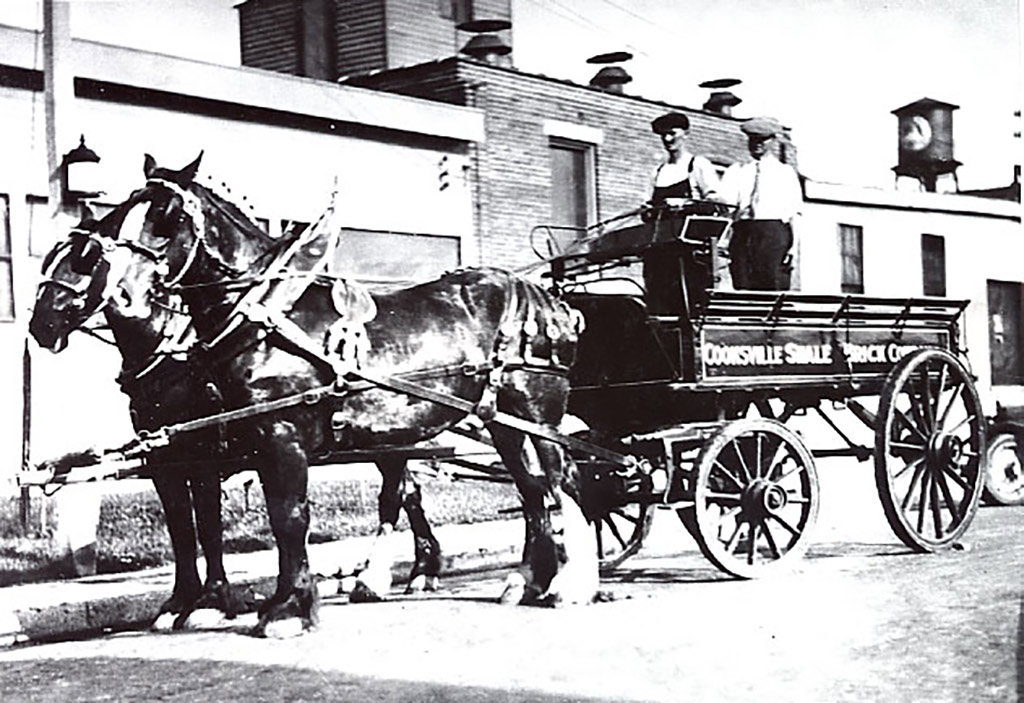At the corner of Dundas Street and Mavis Road modern Canada took shape, brick by brick.
Through most of the 20th century Cooksville was home to the largest brick manufacturer in Canada, which, at its height made 300,000 bricks a day that were shipped by truck and train across the country.
The Cooksville brickyard, which operated from 1913 to 1991, was known by a variety of names including Ontario National Brick Company (1913), Cooksville Shale Brick Company (1922), Cooksville Brick Company Limited (1944), Cooksville Brick and Tile Company (1946), Cooksville La Prairie Brick Company (1953), Domtar (1956) and Canada Brick (1985).


From its earliest days, the brickyard was a major employer of new Canadians – Italians, Croatians, Irish, Poles, Ukrainians and Russians – attracted to the rural area outside Toronto by the promise of steady employment and available housing.
Quite a few of them lived on the brickyard site in what might have been one of the first housing developments in current-day Mississauga.
Back in the early 1900s Cooksville was a small, unincorporated rural village surrounded by farms, which along with Clarkson, Lorne Park, Erindale, Sheridan, Dixie, Streetsville, Meadowvale, Malton, Lakeview and Port Credit, made up Toronto Township on land purchased from the Mississaugas of the Credit a century earlier.
About 10,000 years before that, a retreating glacier had left a significant deposit of clay, silt and sand on the north side of present-day Dundas Street – the building blocks for bricks.
In 1912, the Ontario National Brick Company purchased the McLaughlins’ 100-acre farm on the northeast corner of Dundas Street and Mavis Road. The following year it began manufacturing bricks, employing 140 men and 35 teams of horses.
To accommodate these new arrivals, the company built housing, beginning with 15 homes and a boarding house, laid out in four rows. Those early homes had electricity but no running water.
In those early years, it was physically exhausting, dangerous work to quarry, mix, shape and bake the bricks in a large kiln that could reach temperatures close to 1,000 degrees Celsius.
In 1913 a man lost his arm to the cogs of the machine that mixed and pulped the clay. The following year four men died when they fell 75 feet from atop a scaffold, and in 1922 a Russian labourer suffocated when he fell into an eight-foot-deep pile of clay dust.
Then in 1924, a massive fire swept through the plant. It destroyed the central machine shop, threw 140 men out of work, and caused a nation-wide brick shortage at the height of the summer building season.
By then Brickyard Village, as it was known, had expanded to include 35 families, while the plant employed close to 350 men – almost half the population of Cooksville.
There were also multiple boarding houses, some operated by Croatian women. While the men laboured in the plant, women laboured in the Village to clean, feed and clothe the workers, often washing the overalls in gasoline to rid them of the fine clay dust.

By the 1950s, a vibrant social scene had developed, with the brickyard sponsoring baseball, soccer and football teams and an orchestra. It paid for a bus to ferry children to Cooksville Public School and St. Patrick’s Church school, and each year it entered the draft horse competitions at the Canadian National Exhibition and Royal Winter Fair.
Brickyard workers also ventured out, opening retail businesses, such as Dominic Carmoni and Michael Torchia who opened the area’s first Italian Groceteria in 1956 on Hook Avenue, selling imported coffee, olive oil, meats and pasta.
After the brickyard closed, Jannock Properties invested $45 million in the mid-1990s to remediate, grade and prepare the land for a new generation of residents. Today the area is home to shops, townhouses and single-family homes on streets such as Claymeadow Avenue and Clayhill Road, which borders Brickyard Park.
The 26-acre park includes community baseball, softball and soccer fields, a cricket batting cage, a playground and a multi-use trail. It also features a brick relief sculpture of an eagle forged by Mississauga artist and former brickyard stone cutter Angelo Belluz that was originally commissioned for the brickyard office.
Art and a park that salutes and remembers the workers and families who helped to build this city.
Celebrate all the people and cultures that have shaped Mississauga at the city-wide Carassauga Festival of Culture May 24-26, featuring 25 cultures with performances and food at eight locations. For more information visit carassauga.com
Click here to continue reading Chapter 3.
Have your own story to share? We’d love to here it! Click here to submit your story.
